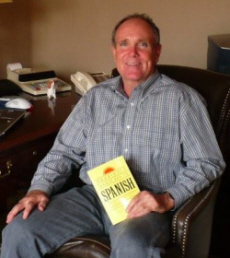YOU FUTURE IS BRIGHT! Part II

The actual Spanish future tense is used to express what WILL happen. Most Spanish verbs in the future are regular and start with the infinitive and end with their appropriate future ending: Yo – é, Tú- ás, Usted, él, ella, – á, Ellos- án, Nosotros – émos. Regular as well as irregular verbs use these same endings. Look at these examples of regular verbs in the future:
I will be at your house by four pm. – Estaré en su casa para las cuatro.
Will you send the letter to Deborah? – ¿Le enviará la carta a Deborah?
Who will be the next president of Panamá? - ¿Quién será el próximo presidente de Panamá?
We will get up at six am. – Nos levantarémos a las seis.
They will travel to Colombia next week. – Viajarán a Colombia la semana próxima.
When will Donna write another restaurant review? - ¿Cuañdo escribirá Donna otra critica de restarante?
There are a dozen or so irregular verbs in the future. As you can see below, the endings are the same as the regular verbs, but the stem is a little different. Lucky they are not too difficult to memorize. Take a look at several irregular verbs in the future:
Tener (to have or to hold). The stem is Tendr. I will have it done by tomorrow. – Lo tendré hecho para mañana. (Yo…é, Usted, él, ella…tendrá, Ellos…tendrán, Nosotros...tendrémos, Tú… tendrás).
Poder (to be able to). The stem is Podr. Jamuna will be able to come tomorrow. – Jamuna podrá venir mañana. (The other endings are the same).
Decir (to say, tell). The stem is Dir. They will tell us tomorrow. – Nos dirán mañana.
Hacer (to make or do). The stem is Har. We will do it next week. –Lo Harémos la semana que viene.
Saber (to know facts or how to). The stem is Sabr. We will know more tomorrow than we know today. – Sabrémos más mañana de lo que sabemos hoy.
Do you remember how to say There is or There are? Hay. Using Hay in the future (saying there Will Be) is easy. Habrá. That’s it, even when you are talking about more than one object.
There will be a party tomorrow at Sheila’s house. –Mañana Habrá una fiesta en la casa de Sheila.
And there will be at least twenty people there. –Y habrá por lo menos viente personas allí.
The key to the future tense is knowing a lot of infinitives, the endings, (which are all the same), and stems for the few irregular verbs. Practice the future tense by using the infinitive verbs in conversation you already know. And anytime you learn a new infinitive, you WILL know (Sabrá) how to use it in the future tense.
Hope this helps!
********
Hi, my name is Fred. My background in Spanish is a year in high school
(long ago) and the last five years taking private lessons almost daily, in
the States and in Panamá'. I am not yet fluent, but maybe I can pass on
to you some tips to help your Spanish learning experience.
